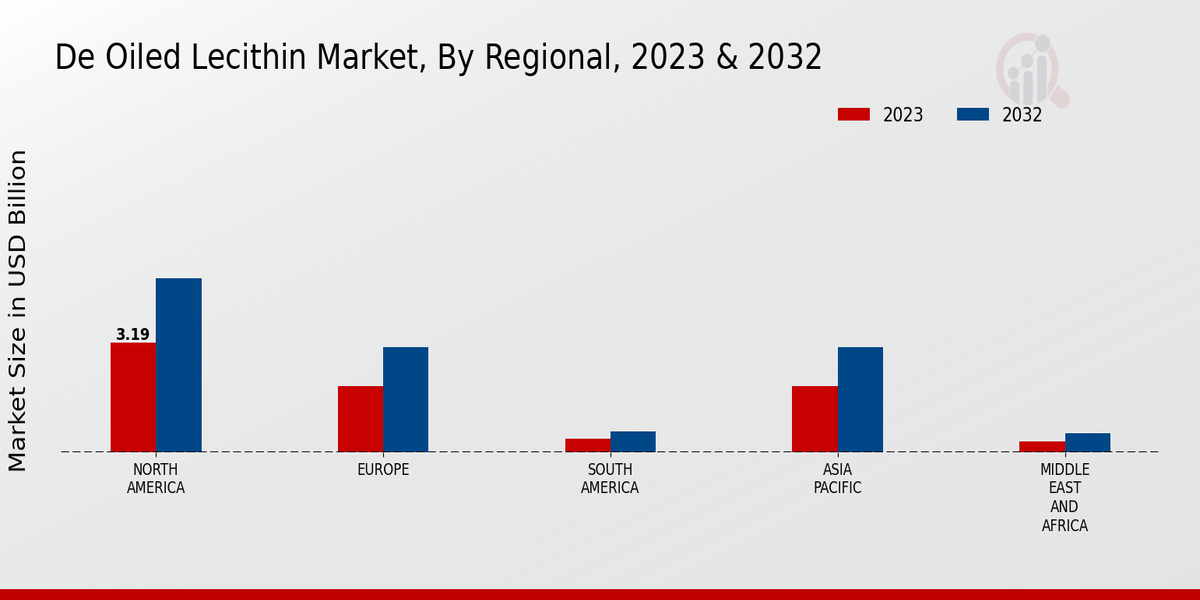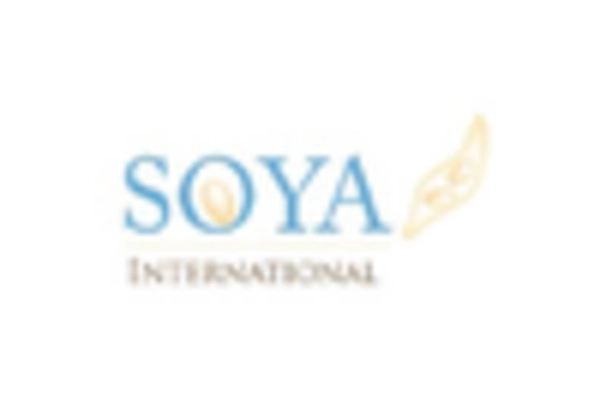Rising Health Consciousness
The De-Oiled Lecithin Market is experiencing a notable surge in demand driven by increasing health consciousness among consumers. As individuals become more aware of the nutritional benefits associated with lecithin, particularly its role in supporting brain health and cholesterol management, the market is likely to expand. Recent data indicates that the demand for health-oriented food products has risen by approximately 20 percent over the past year. This trend suggests that manufacturers are increasingly incorporating de-oiled lecithin into their formulations to cater to health-conscious consumers, thereby enhancing the market's growth potential.
Regulatory Support for Natural Ingredients
The De-Oiled Lecithin Market is positively influenced by regulatory support for natural ingredients in food and cosmetics. Governments and regulatory bodies are increasingly promoting the use of natural additives, which enhances the appeal of de-oiled lecithin as a clean label ingredient. This regulatory environment encourages manufacturers to incorporate de-oiled lecithin into their products, aligning with consumer preferences for transparency and natural sourcing. As a result, the market is likely to benefit from this supportive regulatory framework, fostering growth opportunities for de-oiled lecithin in various applications.
Expansion in Food and Beverage Applications
The De-Oiled Lecithin Market is witnessing significant growth due to its expanding applications in the food and beverage sector. Lecithin is utilized as an emulsifier, stabilizer, and texturizer in various products, including baked goods, dairy items, and sauces. Recent statistics reveal that the food and beverage industry accounts for over 60 percent of the total lecithin consumption. This substantial share indicates a robust demand for de-oiled lecithin, as manufacturers seek to improve product quality and shelf life. Consequently, the increasing incorporation of de-oiled lecithin in diverse food applications is likely to propel market growth.
Technological Advancements in Extraction Processes
The De-Oiled Lecithin Market is benefiting from technological advancements in extraction processes, which enhance the quality and yield of lecithin. Innovations in extraction techniques, such as enzymatic and supercritical fluid extraction, are enabling manufacturers to produce high-purity de-oiled lecithin more efficiently. These advancements not only improve product quality but also reduce production costs, making de-oiled lecithin more accessible to a wider range of industries. As a result, the market is poised for growth, as companies increasingly adopt these technologies to meet rising consumer demands for high-quality ingredients.
Growing Demand in Nutraceuticals and Dietary Supplements
The De-Oiled Lecithin Market is experiencing a surge in demand from the nutraceuticals and dietary supplements sector. Lecithin is recognized for its potential health benefits, including its role in cognitive function and liver health. Recent market analysis indicates that the nutraceuticals segment is projected to grow at a compound annual growth rate of 8 percent over the next five years. This growth is likely to drive the demand for de-oiled lecithin, as manufacturers seek to formulate innovative supplements that cater to health-conscious consumers. The increasing focus on preventive healthcare is further expected to bolster this trend.


















Leave a Comment